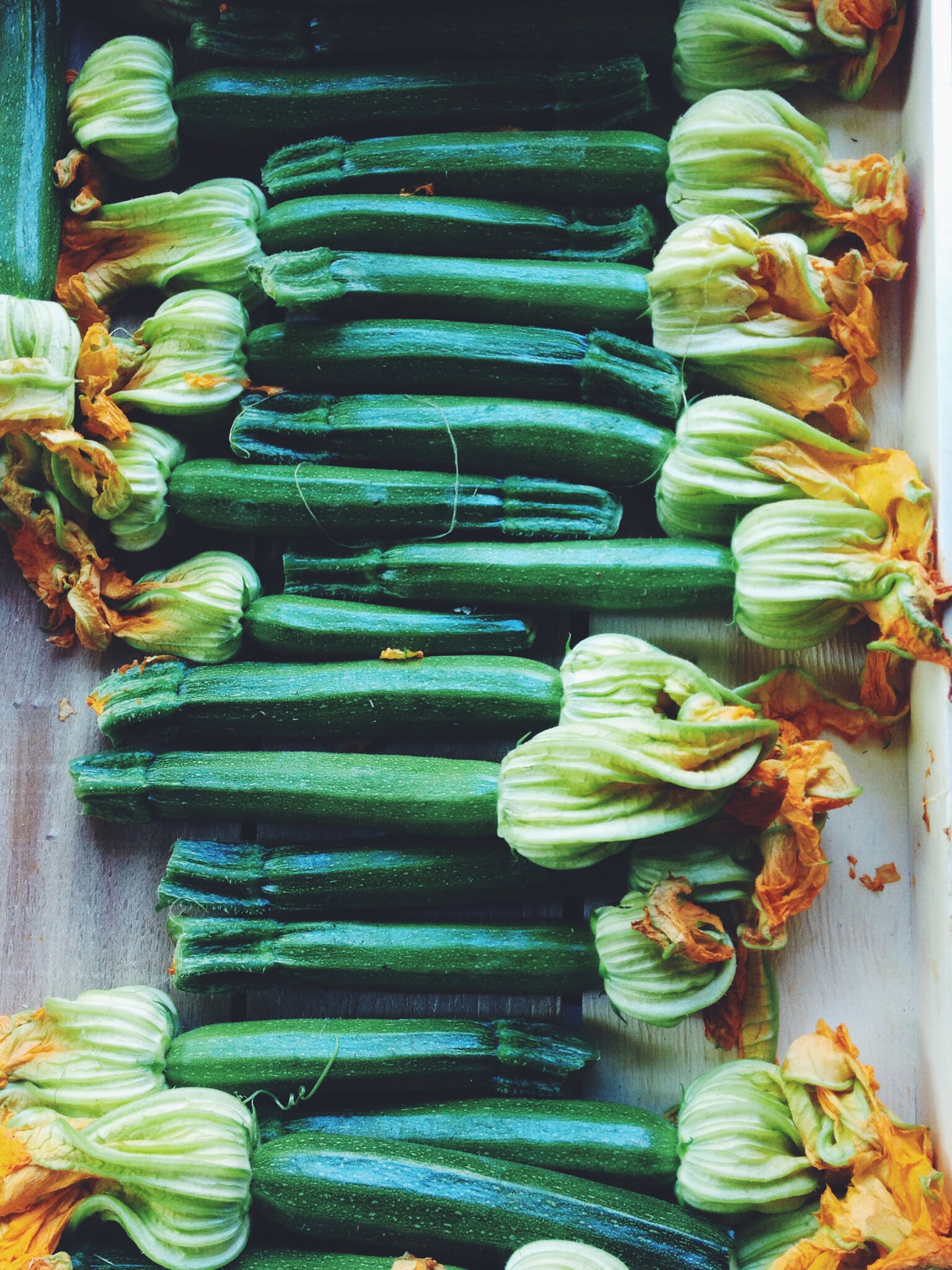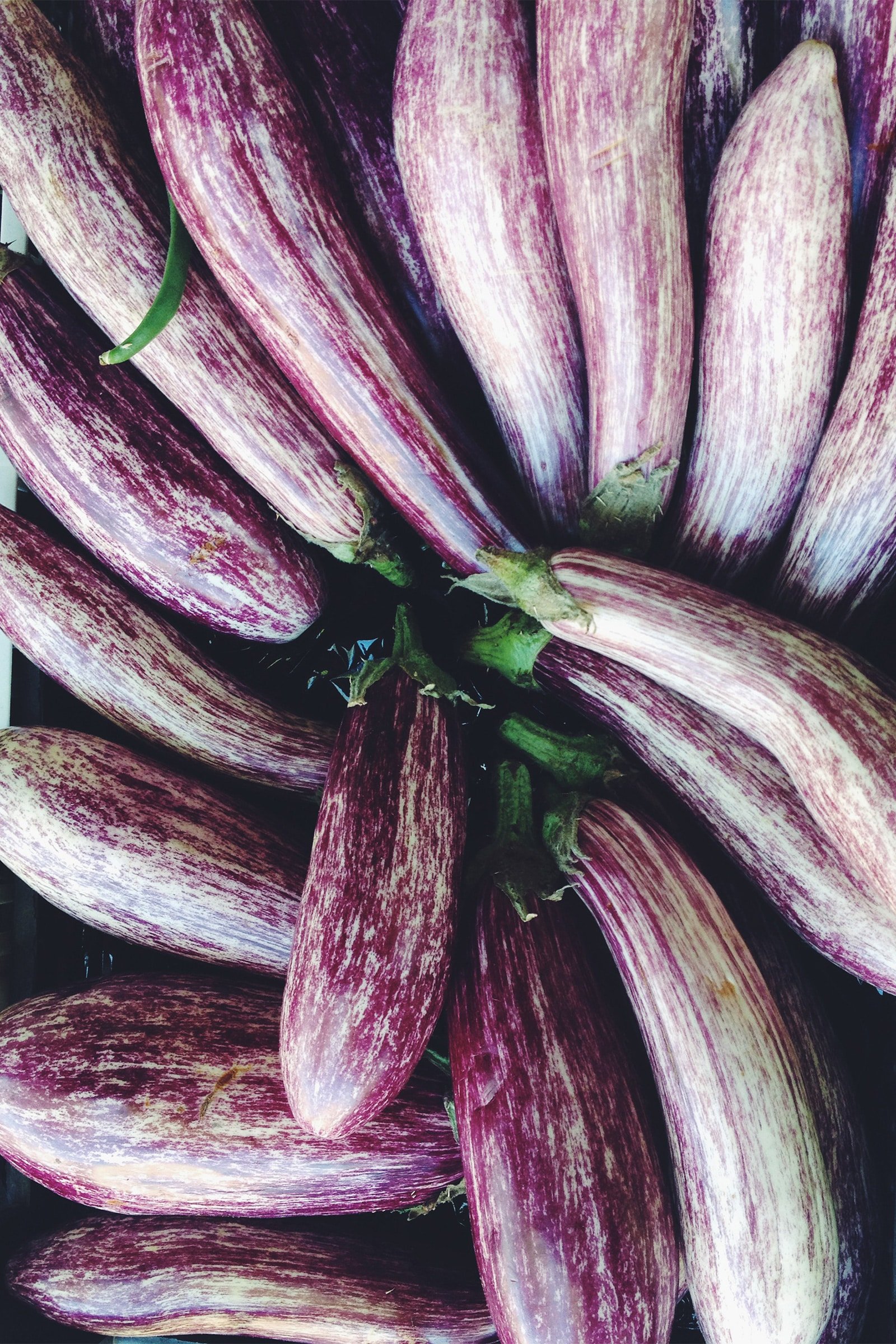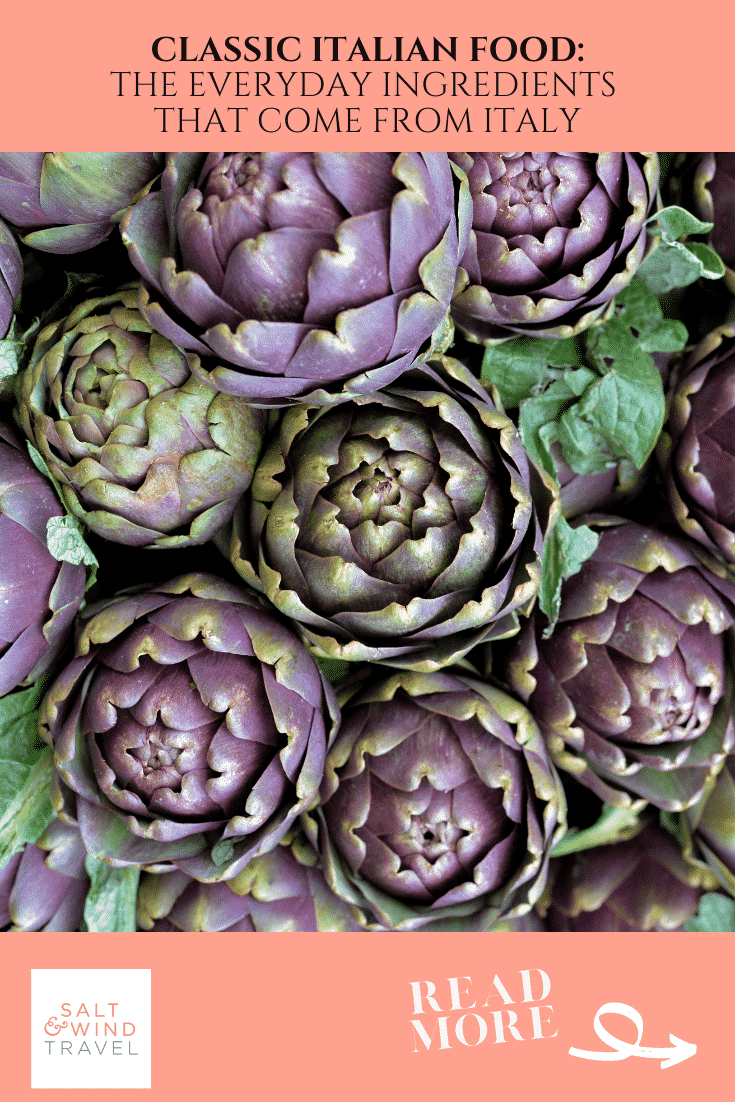Table of Contents
When it comes to savoring our meals, we like to know the history behind the dish and its ingredients. And that’s especially true with traditional Italian food.
So you can imagine our surprise when we learned that some of the ingredients synonymous with authentic Italian food originally came from other parts of the globe.
Case in point: the tomato. It’s nearly impossible to imagine pizza or a Caprese salad without it. Yet tomatoes aren’t originally from Italy. And the tomato is by no means an anomaly. You might be surprised to learn a few other ingredients that aren’t native to Italy.
But before we get into that, let’s explore the ingredients that call Italy home. Here are seven foods that originated from Italy and three that didn’t yet crucial to traditional Italian cooking. Plus, we’re sharing ways to use each in your kitchen.

Iconic Ingredients That Originated In Italy
Olives
Technically, olives are native to the Mediterranean region and are believed to date as far back as 6,000 years ago.
Even so, it isn’t easy to talk about Italian food without referencing olives. The country is home to at least 400 varieties of olives, including native regional types with their characteristics.
In the Northwest region of Liguria, you’ll find smooth, delicate, and sometimes fruity olives like Taggiasca and Pignola. In the central parts of Tuscany and Umbria are bold, herbaceous olives like Moraiolo and Frantoio. And to the south in Sicily, you’ll come across aromatic olives like Moresca and Tonda Iblea.
As we’ve mentioned before, olives and olive oil are essential ingredients to Italian cooking. Olives are found throughout traditional Italian cuisines, including as snacks during aperitivo hour, in braised dishes like cacciatore, and bread like focaccia. Olive oil is used for cooking and as a condiment–it’s drizzled over meats, roasted vegetables, pasta, and soups.
Grapes
As one of the countries that drink and produce the most wine in the world, it makes sense that some of the earliest grapevines were cultivated in the region during Roman times. The Romans undoubtedly contributed to advances in winemaking, but there are even previous roots that point to modern-day Georgia, Armenia, Azerbaijan, and parts of Iran and Turkey.
Today, Italy produces wine in all 20 regions, and a big part of that is with native grapes. Some of the country’s most famous native grapes are Sangiovese (the grape used to make Chianti), Nebbiolo, Barbera (found both all over Piedmont, especially), Nero d’Avola, and Vermentino.
But that’s only scratching the surface because there are more than 2,000 native Italian grape varieties.
Fennel
Going back to Roman times again, finocchio (pronounced fee-no-key-oh) or fennel is another superstar Italian ingredient. It most likely originated in the Mediterranean, though ancient Egyptians, Indians, and Chinese are strangers to it. The fragrant, mildly sweet herb that smells like licorice grows wild all over the country, and it’s especially popular in the coastal Veneto region in the northeast.
You’ll find raw and cooked fennel used in Italian cooking, including in salads, pasta, side dishes, and risottos. Fresh fennel is excellent with fish, and fennel seeds are also common in sausages and meatballs. You can even try it between bread, like in this marinated salumi sandwich.
Or, eat fennel the traditional Italian way–raw as a digestive aid after a meal. Just be sure to soak raw fennel in ice for a few minutes to keep them crisp, then slice them thin, or you’ll be chewing up a storm.
Beets
Experts say the beets we enjoy today were likely cultivated in Italy or Germany as early as the 16th century. Wherever its origins lie, we’re glad to have all of the colorful varieties available to play with when we’re whipping up something delicious in the kitchen, like this roasted beet and pistachio salad or this walnut beet spread.
When we want to take our dishes up a notch, we dress them with Italy’s own Chioggia (pronounced key-oh-juh) beet variety, named after a small fishing village near Venice.
We especially like roasting the red and white striped beets to maximize their flavor or pickling them as a finishing touch to the main course. They taste great, either hot or cold, raw or cooked; it’s just a matter of personal preference.
Artichoke
Artichokes are another vegetable that dates back to Roman times, and some of the earliest versions were cultivated in Sicily and Naples. Artichokes are found in Italian food all over the country, though perhaps its most famous preparations come from Rome; they’re known as carciofi alla Romana and carciofi alla giudia.
Carciofi Alla Romana is Roman-style braised artichokes (think garlic, herbs, olive oil), and carciofi alla giudia are Roman-Jewish style artichokes twice-fried and eaten whole. The slight difference is that carciofi alla Romana is usually served as a side dish, whereas carciofi alla giudia is typically enjoyed as an appetizer.
Rome even has its local variety of artichokes available if you’re in the area during its short season, between February and April. You can also order the baby artichokes at our restaurant pick for classic Roman food in the city center.
Pro tip: This vegetable can be tricky to prepare at home if you’re not used to working with them. Use your hands to pull away any tough or blackened outer petals. Then use a knife to trim the top of the artichoke to remove its prickly tips.
Radicchio
This slightly bitter vegetable belongs to the chicory family, meaning it’s botanical cousins with endive and frisee. Italian radicchio can be traced to the Veneto region in the northeast, as far back as the 15th century, although its origins are believed to date back to ancient Egypt.
Four of Italy’s major kinds include bold Chioggia, mild Treviso, tangy Verona, and bittersweet yet tender Castelfranco radicchio. (If you want to try them for yourself, our friends at J. Marchini Farms ship radicchio and other Italian produce like puntarelle and cardoons throughout the United States.
This winter vegetable is considered Indicazione Geografica Protetta (IGP) in Italy, meaning some of its production occurred in the specified region. It even has its exclusive group–aka a Consorzio, or group of growers and producers–that’s all about making sure their radicchio is grown according to the highest quality standards.
If you aren’t a fan of radicchio’s bitterness which you might taste when eating it raw, soaking it in ice water for a few minutes or cooking it will mellow the flavor. Try roasting it with olive oil, salt, and pepper or stirring it into a risotto. Otherwise, we like using radicchio as salad cups filled with apple, pistachio, and pomegranate.
Parsley
Many Italian dishes are not complete without herbs like parsley, basil, rosemary, and mint. And of those commonly used herbs, parsley is one of the few that call Italy home. Specifically, Italian parsley (aka flat-leaf parsley) is native to the Meditteranean region, including southern Italy.
When working with fresh herbs, they’re best added toward the end of cooking. Add dry herbs during cooking, so they have time to release their flavor. Note that Italian parsley has a stronger flavor than the curly kind.

Three Ingredients In Classic Italian Cooking That Aren’t From Italy
Tomatoes
We’ve mentioned before that tomatoes are native to Mexico. Spanish conquistadors introduced tomatoes to Europe, and after a period of suspicion where Europeans thought they were poisonous, they were readily adopted in Italy.
The tomato has made a permanent home in Italian kitchens from pizza, pasta, soups, stews, and antipasti; the tomato has made a permanent home in Italian kitchens. There’s even a specific type of regional variety (hint: the famous San Marzano kind) used exclusively in Neapolitan pizza.
Zucchini
Technically speaking, zucchini is part of the squash family, and squash originally comes from Mesoamerica, so we’re putting zucchini in the non-native category.
But, what we know as zucchini today was cultivated in Milan thanks to European explorers who brought it back to the region in the 1800s. That’s why zucchini comes from the Italian word “Zucca,” meaning gourd or squash. We like them fried with basil and mint or gazpacho-style with walnuts and thyme.
Eggplant
You probably know eggplant parmigiana as a classic Italian recipe, but the story goes that eggplant hails from India and China. It’s thought that Arab traders introduced the vegetable to Italy’s southern parts (Sicily, specifically) sometime in the 15th century.
The good news is there are many ways to cook eggplant besides frying it. Roast halved eggplant in olive oil and seasonings for a custard-like texture, mince them up for a vegetarian ragu sauce, or grill them for our piadina recipe–one of our culinary souvenirs from the Emilia-Romagna region.
With all this food history knowledge, you can now metaphorically travel back in time and around the world in just one bite of your favorite Italian recipe. Or, enjoy it IRL when you next travel to Italy.
Have Us Plan Your Italy Trip
Looking to travel to Bel Paese? If you are heading to Italy soon, check out our Ultimate Guide To Planning A Trip To Italy or reach out to have us plan a custom trip for you!
Our Italy travel planning services are here to help you achieve the ideal vacation. After discussing your preferences during a short consultation, we’ll plan your perfect itinerary. Head here to get started!
PIN IT FOR LATER!
Want to save this article for a later date? Pin it to your Pinterest account so you can access it when you want. And, as always, share your food adventures with us by tagging @saltandwind and #swsociety on social!

Photo Credit: Opening photo by Bisual Studios; other photos by Lidia Burakova
2 thoughts on “From Italy con Amore: Foods That Originated From Italy”
Zucchinis were invented in Italy. Zucchinis didn’t exist they were cultivated from squash breeds brought to Europe from the Americas and invented by Italians. Brought back to America through Italian immigrates in the first half of the 20th century, so how did not originate in Italy.
Just like Genoa basil or Sweet Basil was created in Italy from holy basil which is Asian, but the smell and taste at holy basil is vastly different than Genoa Basil, a basil that originates in Italy.
Yes, exactly!